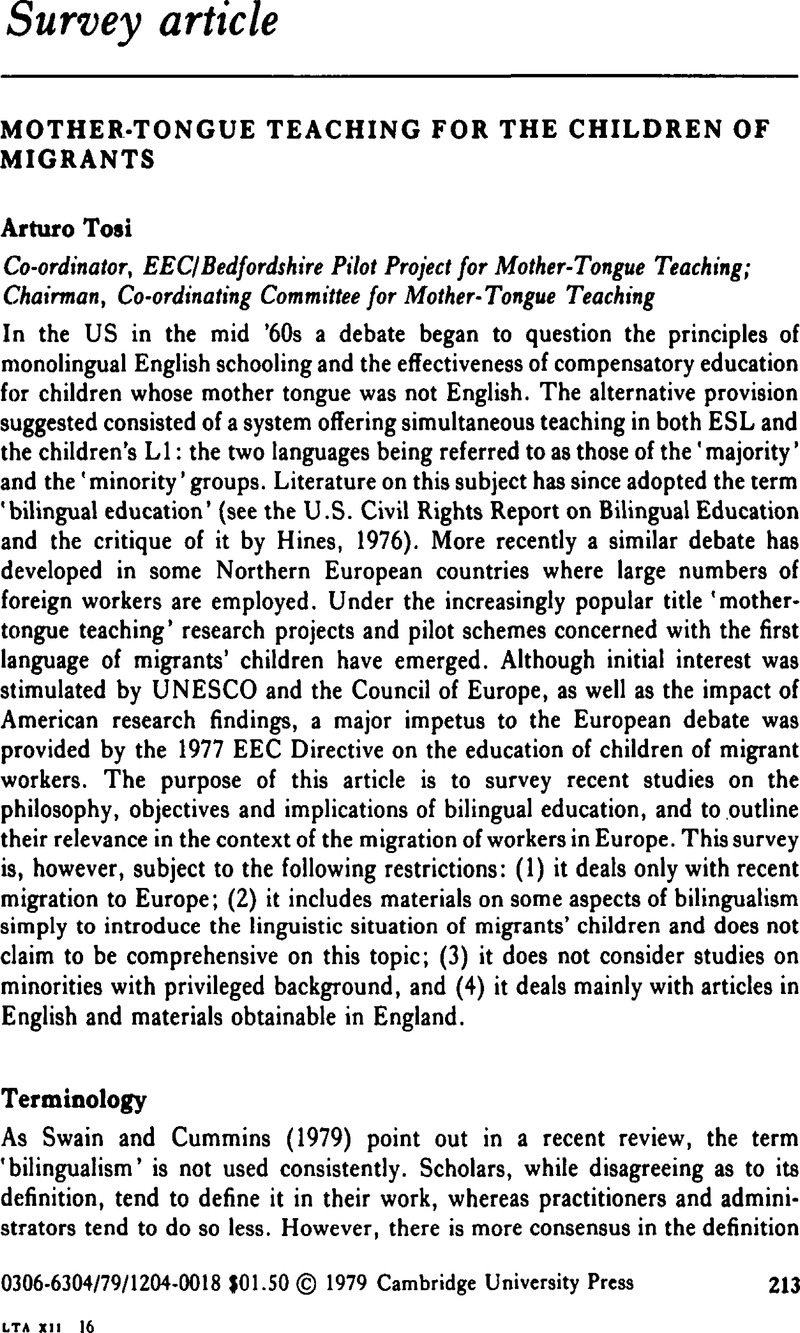Crossref Citations
This article has been cited by the following publications. This list is generated based on data provided by Crossref.
Kennedy, Chris
1982.
Language planning.
Language Teaching,
Vol. 15,
Issue. 4,
p.
264.
Edwards, Viv
1984.
Linguistic Minorities, Policies and Pluralism.
p.
49.
Tosi, Arturo
1986.
Home and community language teaching for bilingual learners: issues in planning and instruction.
Language Teaching,
Vol. 19,
Issue. 1,
p.
2.
1987.
Ethnic Minority Children Acquiring Literacy.
p.
289.
Logan, Penny
1989.
Mother‐tongue teaching: A case study.
Journal of Ethnic and Migration Studies,
Vol. 15,
Issue. 2,
p.
241.
Verhoeven, Ludo T.
1991.
Predicting Minority Children's Bilingual Proficiency: Child, Family, and Institutional Factors*.
Language Learning,
Vol. 41,
Issue. 2,
p.
205.
Khan, Niaz Ahmed
and
Kabir, M Anwarul
1999.
Mother-tongue education among Bangladeshi children in Swansea: an exploration.
The Language Learning Journal,
Vol. 20,
Issue. 1,
p.
20.
Tosi, Arturo
2004.
The Language Situation in Italy.
Current Issues in Language Planning,
Vol. 5,
Issue. 3,
p.
247.
LaMuCuo, YiXi
2019.
Becoming Bilingual in School and Home in Tibetan Areas of China: Stories of Struggle.
Vol. 34,
Issue. ,
p.
15.



